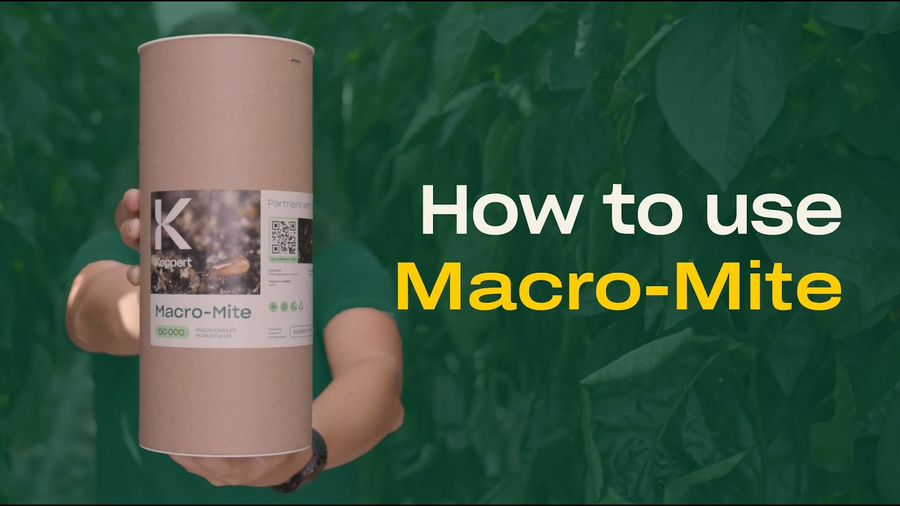Macrocheles robustulus is a species of predatory mite known for its role in biological pest control, particularly in agricultural and horticultural settings. Macrocheles robustulus is also a soil-dwelling predatory mite, controlling eggs and larvae of flies, thrips pupae, nematodes and other soil living pests, which can be found in high numbers in greenhouses in soil which has been enriched with compost. As natural enemies of various pests, Macrocheles robustulus plays a vital role in integrated pest management (IPM) strategies.
Macrocheles robustulus for pest control
Macrocheles robustulus is used for the control of the following pests:
The predatory mites feed on larvae of sciarid flies, thrips pupae and other soil-dwelling insects. The mites appear in and on the soil and at the base of plant stems.
Feeding behaviour of Macrocheles robustulus
Predatory mites pierce their prey and suck out the contents. Macrocheles robustulus is a generalist predator. In addition to soil-dwelling thrips stages, it also feeds on fly larvae, mites, springtails, nematodes and other small soil-dwelling organisms. Adult females can consume four to five Western flower thrips (Frankliniella occidentalis) pupae per day.
Life cycle of Macrocheles robustulus
Macrocheles robustulus passes through the following stages: egg, six-legged larva, eight-legged protonymph and deutonymph, and adult. Adult mites are 0.6-0.8 mm long, oval shaped and pale white with a brown oval dorsal shield and brown legs. The larvae are white. Protonymphs and deutonymph are pale white with a brown shield, more clearly visible with increasing size. The eggs are oval, about 0.3 x 0.2 mm in size and pearly white.
Best conditions for use of Macrocheles robustulus
For optimal results the soil has to be moist, rich in organic matter and have a loose structure. The minimum temperature for successful use of Macrocheles robustulus is 15°C (59°F).
How to use Macrocheles robustulus
The predatory mite Macrocheles robustulus is available in a cylinder (Macro-Mite).
- Turn and shake the cardboard cylinder gently before use
- Spread material evenly on soil or planting medium (not on the plastic)
The dosage of Macro-Mite depends on climate, crop, planting medium and pest density and should always be adjusted to the particular situation. Start introduction preventively or as soon as the first pests are detected in the crop. Introduction rates typically range from 100-500 per m2/release. Consult a Koppert advisor or a recognized distributor of Koppert products for advice on the best strategy for your situation.
